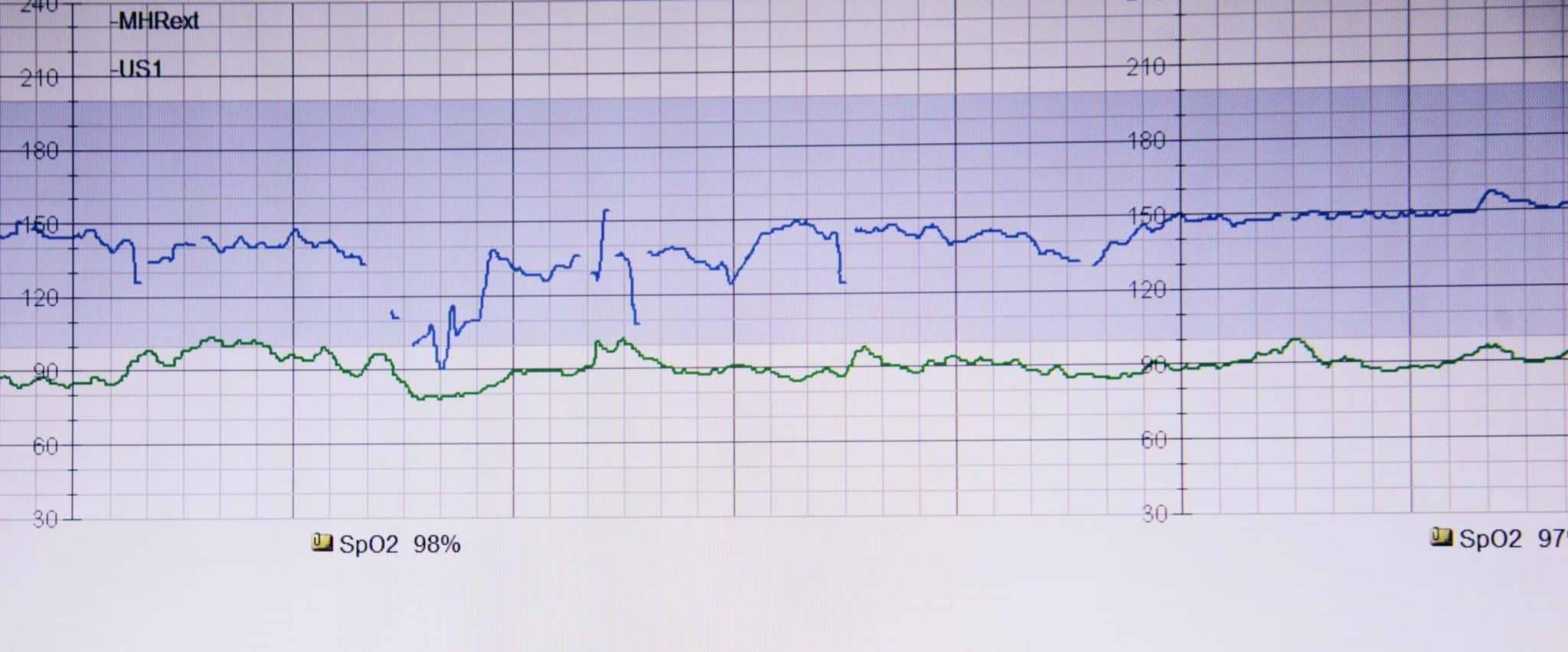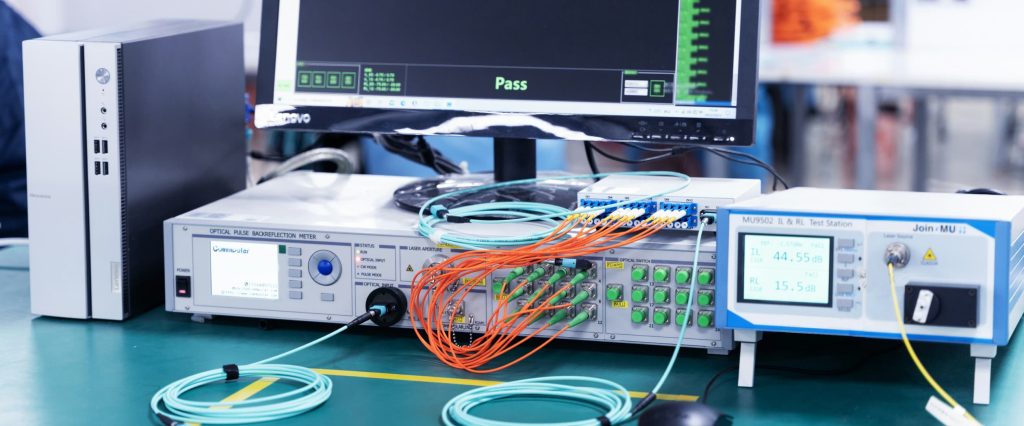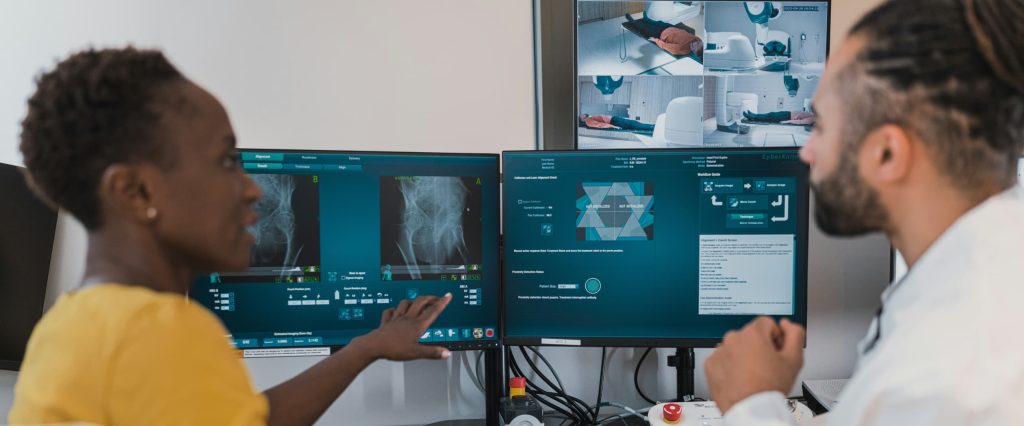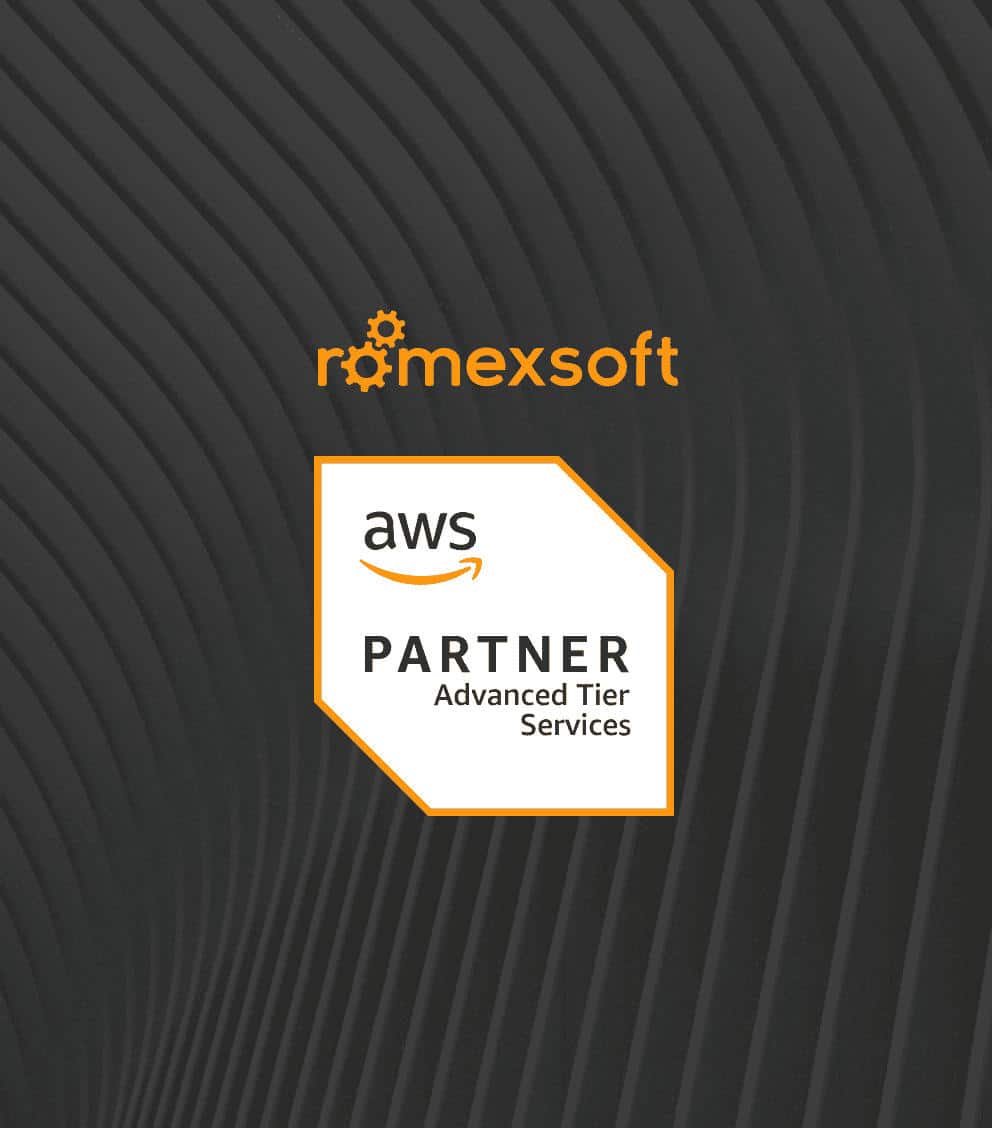How to Improve Patient Outcomes with Data Mining in Healthcare
Various operations involving large amounts of healthcare data often present multiple challenges, including fragmented data, significant regulatory pressures, and costly integrations. If even one of the stated challenges resonates with your case, healthcare data mining may become a solution. Throughout the article, you’ll discover what medical data mining is, how it works, how it can boost patient care quality, and how your healthcare business may benefit from utilizing it.
The blog discusses:
- what is data mining in healthcare and how it works
- key benefits you’ll obtain
- main data mining techniques
- real-world applications of data mining in the healthcare industry
- common challenges to be aware of
- healthcare data mining future trends
- how Romexsoft will support your data mining initiative

Table of Contents
Every clinical decision leaves a trail of data, and with the right tools, that data can help you timely uncover risks, cut costs, and reshape the way care is delivered. Data mining in healthcare is gradually becoming a key tool for healthcare providers and institutions to simplify how they work with medical data. By using data mining techniques, it’s possible to quickly analyze large volumes of medical information, identify patterns, and extract valuable insights with ease. In this way, you can easily speed up diagnoses, and get treatments to market faster. Let’s take a closer look at healthcare data mining work principle, and how you can implement it within your operations.
Table of Contents
What is Data Mining in Healthcare and How It Works?
Generally, data mining is the process of extracting meaningful patterns, trends, and insights from large datasets using statistics, Machine Learning (ML), and analytical-based techniques. By analyzing electronic health records, diagnostic results, treatment histories, and insurance data, healthcare organizations can optimize treatment protocols, predict patient risks, improve care quality, and reduce costs. Here’s how data mining process looks like in short:
- Collection. Gather data from diverse sources like EHRs, lab systems, medical imaging, wearable devices, genomics, clinical notes, and public health databases. This step builds the foundation for a 360° patient view.
- Cleaning. By using data mining in healthcare, you can detect and correct errors, eliminate duplicates, and standardize formats (e.g., ICD codes, timestamps) to ensure data quality and consistency across systems.
- Integration. Merge structured and unstructured data into a unified repository (e.g., data lake or warehouse), enabling cross-system interoperability and longitudinal patient tracking.
- Analysis. Apply data mining and machine learning techniques such as classification, clustering, and association rule mining to identify hidden patterns, trends, and correlations.
- Insight Extraction. Translate patterns into clinical and business insights like predicting patient readmissions, identifying care gaps, or optimizing resource allocation.
- Action. Deliver real-time, role-specific insights via dashboards, alerts, or integrated decision support tools to frontline clinicians, administrators, or researchers.
- Continuous Improvement. Monitor performance, retrain models with fresh data, and adjust based on outcomes to ensure insights remain accurate and relevant over time.
Benefits of Data Mining in Healthcare
The implementation of data mining techniques can help you significantly save time and costs while working with medical data, and at the same time, provide advanced, data-driven care to your patients. Here’s how healthcare organizations are already putting medical data mining to work to improve care and make smarter decisions:
Tailored and Accurate Treatments for Better Patient Outcomes
Data mining in healthcare combines genomic insights, real-time vitals, and historical outcomes to pinpoint which therapies work best for each individual. By matching patients to the most effective drug, dosage, or intervention, clinicians avoid trial-and-error prescribing, reduce adverse reactions, and boost recovery rates. Precision care reduces hospital stays, lowers costs, and ultimately leads to healthier, more satisfied patients and long-term wellness benefits.
Cost Reduction and Operational Efficiency
You can use healthcare data analytics to automate routine tasks and find insights, such as clinical workflows, patient volume forecasting, and more efficient resource allocation. Automating processes such as generating statements and filling out forms allows medical staff to focus more on direct patient care. Specialized services for working with medical data, such as HealthImaging, are designed to simplify the management of large volumes of complex medical data. The platform reduces the workload of IT teams by automating data collection, cleansing, and organization, while reducing storage costs through scalable cloud infrastructure.
This accessibility is already yielding real results. Take Tufts Medicine, for example. Their move to an AWS-powered electronic health record system has yielded clear, measurable benefits, including increased operational flexibility to respond more quickly to patient needs, improved scalability, and compliance with HIPAA and other regulations.
Advancing Personalized Medicine Through Genetic and Clinical Data
Healthcare data mining drives precision medicine by bringing together diverse datasets – from first-party clinical records to third-party and multi-modal sources, to create a complete picture of the patient journey. This unified view supports smarter care strategies, especially when leveraging genomic data for large-scale analysis. For example, organizations like Genomics England and Philips use AI to identify genetic markers linked to diseases, enabling new genetic tests and more informed treatment choices.
Platforms built on advanced cloud services such as HealthOmics and AWS HealthLake simplify storing, querying, and analyzing complex omics and clinical data. These tools accelerate translational genomics research and empower healthcare providers to deliver truly personalized, data-driven care. By adopting these technologies, healthcare organizations have reported up to a 25% reduction in data processing time and improved patient outcomes.
Fraud and Abuse Detection in Health Insurance
Data mining is a proven way to simplify fraud detection process, identify billing anomalies, and service misuse in healthcare insurance. By analyzing large volumes of claims and transactional data, insurers can spot patterns that flag potential fraud or abuse, before they escalate. This not only reduces financial losses but also enhances compliance and ensures that healthcare funds are utilized effectively. Drawing on proven methods from the broader insurance industry, healthcare payers can utilize these techniques to mitigate risk, enforce accountability, and safeguard both their budgets and patients.
Top Data Mining Techniques in Healthcare
Turning raw medical data into useful insights starts with the right techniques. If you’re aiming to predict patient deterioration, streamline operations, or even personalize treatments, the good outcomes should be aligned with an approach that suits your needs and expectations. Below, we break down the most powerful, proven data mining techniques that’ll enable you to make smarter decisions, reduce risks, and boost efficiency. Let’s explore what’s working, and why it matters.
Classification
Classification uses machine learning to sort data into set categories based on patterns in the input. In healthcare, it’s used to predict a patient’s risk of complications, label medical images, or help identify a diagnosis from symptoms. The most commonly utilized models here are decision trees and logistic regression. In this way, the algorithm learns from labeled historical data to assign new data points to categories (e.g., “high-risk” and “low-risk” patient groups).
Clustering
Unlike classification, clustering groups data without using predefined labels, finding patterns or similarities on its own. In data mining in healthcare, this helps uncover disease subtypes, segment patients by demographics or clinical traits, and spot trends in how patients respond to treatment. For example, clustering might show that patients with similar lab results and symptoms respond better to a specific therapy.
Association Rule Mining
Association rule mining finds connections between variables in large datasets using “if-then” rules. It looks at how often patterns occur and how likely they are to be accurate. For example, it might show that patients with diabetes and hypertension are often prescribed a specific medication. These insights support treatment planning and risk assessment.
Sequence and Path Analysis
This healthcare data mining technique finds patterns in the order of events over time. Sequence and path analysis looks at the steps patients take through the healthcare system, tracks how chronic conditions develop, and predicts what might happen next based on past patterns. This helps improve coordination, catch complications early, and guide proactive care.
Predictive Mining
What if you could spot health risks before they turn into emergencies? That’s what predictive healthcare data mining enables. By linking information from EHRs, lab results, imaging, genomics, and public health data, it helps healthcare providers anticipate problems, take earlier action, and plan better for both individual patients and broader populations. Here’s how it works and why it’s increasingly important.
How Data Mining Works in Healthcare
Healthcare data mining is a structured process that transforms large amounts of data into actionable insights to support clinical, operational, and research decision-making. This process consists of five main stages:
Collecting and Connecting the Data
Healthcare data pours in from electronic health records (EHR), imaging systems, claims feeds, genomics labs, wearables, patient-reported forms, clinical notes, and public-health registries. When you weave these fragments together, you get a longitudinal, 360-degree narrative of each patient. That unified view lets your care teams treat the whole person, spot gaps across encounters, and run population-level studies with far greater accuracy.
Storage, Transformation, and Preparation
Raw data rarely arrives ready for analytics. You’ll need to resolve inconsistencies, tag key entities, index unstructured text, and standardize formats. Genomic sequences, radiology images, and structured vitals each demand their own prep steps. By consolidating everything in a secure, well-governed repository such as a data lake, you ensure that analysts and data scientists can pull the right version of the truth whenever they need it.
Data Modeling and Analysis
Once the data is clean, the real discovery starts. Classification, clustering, association rule mining, sequence analysis, and other data-mining techniques uncover hidden correlations. Layer these algorithms with machine-learning models and you’ll predict disease progression, flag at-risk patients early, and even personalize therapy plans. The same models can trace entire care pathways, revealing process bottlenecks you can eliminate.
Insight Generation and Application
Insights only matter if they drive action. Predictive risk scores cue proactive outreach that prevents readmissions. Real-time dashboards embed domain knowledge directly into daily workflows, giving clinicians the confidence to act fast. Automated summarization of forms or discharge notes frees staff for high-value work, and breakthroughs in genomics or diagnostic automation shorten the road from discovery to treatment.
Deployment and Evaluation
Finally, deploy those models into clinical decision support tools, population-health dashboards, or R&D environments. Continuous monitoring guards against model drift and keeps outputs aligned with clinical and business targets. As new data streams in and patient demographics shift, you can retrain and refine your models so they stay sharp.
Real-World Use Cases of Data Mining in Healthcare
Healthcare data mining is already widely adopted by leading medical institutions and organizations worldwide, and its impact is increasingly visible in everyday clinical routines. Below, we’ve highlighted some of the successful real-world use cases of data mining in the healthcare industry that you may find particularly relevant and inspiring.
Disease Outbreak Prediction and Management
Data mining is almost indispensable for predicting and managing disease outbreaks by transforming fragmented health data into real-time, actionable insights. It allows healthcare organizations and public health authorities to detect abnormal trends, forecast infection spread, and respond to emerging threats more effectively.
During the COVID-19 pandemic, EMIS Group used its cloud-based analytics platform, Explorer, to support real-time disease tracking and response. By bringing together data from over 4,000 general practices, hospitals, and patient self-reports, the platform offered a clear picture of how infections were spreading locally. With data mining techniques, EMIS helped healthcare professionals and researchers identify hotspots, predict how the virus might spread, monitor symptoms, and spot issues in care delivery. The platform’s secure, scalable setup allowed for fast, reliable analysis and insights, helping clinicians make quicker diagnoses, allocate resources effectively, and carry out timely public health actions.
Patient Readmission Risk Assessment
Lowering hospital readmissions starts with spotting which patients are most likely to come back after discharge. By examining EHRs, past treatments, and demographic details, providers can find risk patterns and assign scores that guide early follow-up, education, or support. This leads to better outcomes, fewer avoidable readmissions, and more efficient use of resources.
One of the notable examples of data mining in healthcare is the AWS experience. Using Amazon SageMaker, they developed a machine learning pipeline to predict readmission risk in diabetic patients. Drawing from more than 100,000 records across 130 U.S. hospitals, the model highlighted key risk factors like admission type, diagnoses, procedures, and medications. By identifying high-risk cases early, the system supports more personalized care, demonstrating how cloud-based analytics can lead to better outcomes and lower healthcare costs.
Healthcare Fraud Detection
By analyzing large sets of claims, provider records, and transactions, systems can detect issues like duplicate charges or mismatched services and diagnoses. Healthcare fraud detection uses these insights, applying data mining techniques to uncover false claims, billing errors, and patterns of abuse that undermine the system’s integrity.
Researchers have developed an explainable machine learning model to detect Medicare insurance fraud by analyzing large-scale claims data. The model employs a novel ensemble supervised feature selection technique, reducing dataset dimensionality by approximately 87.5% without compromising performance. This reduction enhances model interpretability and efficiency, making it easier to identify fraudulent activities. The approach treats fraud detection as a supervised anomaly detection task, addressing the challenge of highly imbalanced big data in healthcare claims.
Measuring Treatment Effectiveness
Organizations use data mining in healthcare to evaluate treatment effectiveness by analyzing clinical data like prescriptions, lab results, and patient outcomes. These insights help identify which therapies work best for specific conditions, supporting more targeted and evidence-based care.
Capital District Physicians’ Health Plan (CDPHP) leverages data mining and machine learning to enhance treatment evaluation. Using tools such as Amazon Comprehend Medical and Amazon SageMaker, CDPHP transforms unstructured electronic health records into structured insights and automates HEDIS report generation, which is a key measure of care quality. This automation cut reporting time from several days to just a few hours, boosting efficiency by 60%. With quicker access to reliable clinical data, CDPHP can more effectively measure outcomes, compare treatment effectiveness, and improve care planning for its members.
Prognostic Modeling for Diseases
Prognostic modeling uses data mining to forecast disease progression and treatment response. By analyzing patient personal data such as demographics, vitals, lab results, imaging, and clinical notes, prognostic models help clinicians anticipate complications, personalize care plans, and improve long-term outcomes. This proactive approach supports better resource planning and enables earlier, more effective interventions.
AWS used the MIMIC-III dataset to build models predicting conditions like congestive heart failure (CHF) and sepsis. By combining structured data (demographics, medications) with unstructured clinical notes processed via Amazon HealthLake, the models’ accuracy improved significantly. The CHF model’s accuracy rose from 85.8% to 89.1% after adding unstructured data insights. Clustering of sepsis patients also improved, allowing better risk group separation. This shows how integrating different healthcare data types enhances disease forecasting, supports earlier intervention, and enables more personalized care.
Key Challenges in Data-Driven Care Adoption
Benefits of data mining in healthcare will definitely help you reach better outcomes and operational efficiency, however, its adoption is far from a piece of cake. As you can deal with significant hurdles, from data fragmentation to compliance risks, all which can slow progress and undercut ROI. Let’s explore the most pressing challenges standing in the way of value-driven analytics.
Data Quality and Standardization
Healthcare data management often struggles with fragmented, inconsistent, and unstructured input data. Electronic health records may contain free-text clinician notes, non-standardized terms, or incomplete entries, causing problems with data uniformity. Missing critical information like lab results or diagnoses can result from human error or missed screenings. Furthermore, combining data from different sources, such as Electronic Health Records, wearable devices, and insurance claims, creates interoperability challenges, complicating data mining in healthcare and making accurate analysis harder.
Privacy, Security, and Regulatory Compliance
Protecting patient data is critical and regulated by laws like HIPAA, HITRUST, HITECH, PIPEDA, and GDPR. Strong encryption, access controls, and audit trails are necessary to secure PHI and ePHI. Data breaches are increasing, with recent attacks such as phishing and ransomware exposing weaknesses in legacy systems (e.g., Atrium Health, MedStar Health in 2024). Patient distrust is also high, with over 92% opposing the sale of their health data, according to AMA surveys.
Algorithmic Bias and Model Accuracy
Another critical risk in healthcare data mining is model bias, especially when training data lacks representation from diverse populations. This can lead to skewed predictions and reduced care quality, particularly for minority groups. Sparse or irregular personal data, such as infrequent patient visits, increases the likelihood of overfitting. Even technically strong models face challenges in validation, especially for long-term outcomes like treatment efficacy, where clear ground truth is often delayed or ambiguous. These challenges underline the importance of trustworthy examples of data mining practices to ensure fairness in predictive care.
Resource and Technical Limitations
Scaling data-driven solutions requires significant investment in data management infrastructure, ranging from cloud platforms and secure storage to high-performance computing. While huge platforms like HealthLake simplify integration, costs can be a barrier for smaller organizations. Moreover, there’s a pronounced talent gap, as successful deployment of medical data mining demands expertise across AI/ML and clinical workflows. Legacy systems and outdated IT further hinder modernization and limit adoption of scalable analytics.
Ethical and Legal Concerns
Many patients remain unaware of how their data is utilized for analytics, raising concerns around informed consent and data ethics. Despite anonymization protocols, re-identification risks persist, especially in genomic datasets or those tied to geolocation. Strict healthcare regulatory landscape impose steep penalties for breaches or misuse, threatening not just finances but also brand trust. Ethical failures in areas like fraud detection can quickly escalate, making robust governance and transparency essential to any data management strategy in healthcare.
Future Trends for Data Mining in Healthcare
By now, it’s clear that data mining in healthcare delivers real value, but this is only the beginning. If you want to deliver smarter, faster, and more personalized care, it’s important to stay ahead of what’s coming next. Below, we’ve rounded up the most promising healthcare data mining trends that may shape the future of your practice and improve outcomes in the years ahead.
- AI-powered predictive analytics. Predictive models are advancing fast, with the AI healthcare market projected to hit $47.9B by 2030 . Tools like NYUTron use deep learning to forecast readmissions, mortality, and complications, months before they happen.
- Dealing with unstructured medical data. Most of healthcare data is unstructured. NLP tools like Amazon Comprehend Medical extract insights from clinical notes and reports, enabling richer patient profiles and more precise interventions.
- Mining real-world data (RWD). The healthcare data market is set to triple by 2030. Data mining of RWD, like wearables, telehealth logs, and patient-reported outcomes, speeds up clinical trials and personalizes treatment using real-world evidence (RWE).
- Bias-resistant and ethical AI. As AI adoption grows, healthcare providers must tackle bias head-on. Expect built-in fairness checks in data mining tools to align with FDA SaMD and EU AI Act guidelines, ensuring ethical use of personal data in care delivery.
- Cloud-native data management. Cloud platforms will power scalable, modular data mining solutions. Tools like AWS HealthLake support real-time analytics and API-driven systems, making it easier to integrate medical data mining into existing digital health infrastructure.
- Wearables and IoT data integration. Smartwatches and biosensors continuously stream vital signs like glucose and ECG data. Data mining in healthcare enables real-time intervention and proactive care, key for managing chronic illness and preventing emergency visits.
- Generative AI in clinical workflows. Tools like Nuance DAX and ChatGPT streamline documentation, treatment planning, and decision support. This reduces clinician workload and accelerates access to guideline-based care.
- Stronger interoperability standards. Adoption of FHIR and blockchain pilots is improving data sharing across systems. These standards ensure secure, consent-based access to patient personal data, powering more comprehensive and collaborative care.
What makes data mining in healthcare even more exciting? First and foremost, these tools help doctors make faster, smarter decisions that impact real people. But it’s not just about tech. Real progress means tackling bias, managing personal data responsibly, and making sure every insight is based on clean, connected data. Healthcare leaders who get this right are setting the standard for what modern, patient-focused care looks like.
How Romexsoft Can Help You to Improve Data Mining Quality
Romexsoft is a trusted AWS consulting partner that transforms healthcare organizations through intelligent data mining in healthcare and secure data migration. With deep domain expertise and a mission-driven approach, Romexsoft empowers providers, payers, and life sciences companies to unlock actionable insights from their data while meeting the strictest standards for security, compliance, and interoperability.
Here’s why you should partner with us:
- Healthcare-focused data mining expertise. Romexsoft builds HIPAA-compliant solutions that turn fragmented health records, claims data, imaging reports, and EHRs into unified, analysis-ready datasets. Our custom-built platforms seamlessly integrate with third-party systems like insurance, billing, and labs, creating interoperable data ecosystems where insights are accurate, timely, and clinically valuable.
- Scalable AWS cloud architectures. By using tools like Amazon HealthLake, Glue, S3, and Lambda, we develop robust infrastructures for both real-time and batch processing. These cloud-native environments enable healthcare organizations to efficiently mine structured and unstructured data at scale, including from IoT devices, wearables, and remote monitoring tools.
- Advanced AI/ML for predictive intelligence. We at Romexsoft deliver predictive models using Amazon SageMaker to support use cases like early disease detection, readmission risk forecasting, and treatment impact analysis. By using NLP tools like Amazon Comprehend medical helps us add precision to mining unstructured data, enabling better outcomes and faster decisions across care teams.
- End-to-end data security. We prioritize patient privacy at every layer, applying strong encryption (SQLCipher, SSL/TLS), fine-grained access control, and automated audit trails. Our solutions align with HIPAA compliance requirements, support HEDIS reporting, and ensure that personal data is protected while being fully accessible for authorized analysis.
- Operational and financial optimization. Through targeted medical data mining, we help detect fraud, reduce claim errors, and identify cost-intensive workflows. Our tools drive smarter resource allocation, support regulatory compliance, and help improve financial outcomes without compromising quality of care.
Data Mining in Healthcare FAQ
EHRs store detailed patient’s personal data like diagnoses, treatments, lab results, and clinical notes. Data mining uses this information to find patterns, predict risks or readmissions, evaluate treatments, and support personalized care. This helps healthcare providers improve outcomes, optimize operations, and lower costs.
Big data refers to large, fast, and varied datasets from sources like EHRs and wearables. Data mining extracts useful insights from this data by identifying patterns and making predictions. Big data is the raw material; data mining turns it into actionable information.
Data coding converts medical terms from clinical trials, like diagnoses, medications, and adverse events, into standardized codes using controlled vocabularies (e.g., MedDRA, WHO Drug Dictionary). This ensures consistency, eases analysis, and supports regulatory reporting by enabling accurate data comparison across studies.
Databases and data mining in healthcare support clinical decisions, personalized treatment, early disease detection, and outcome prediction. They also improve operational efficiency, aid public health monitoring, and enable research by revealing patterns in large patient groups, turning raw data into actionable insights that enhance care and reduce costs.





